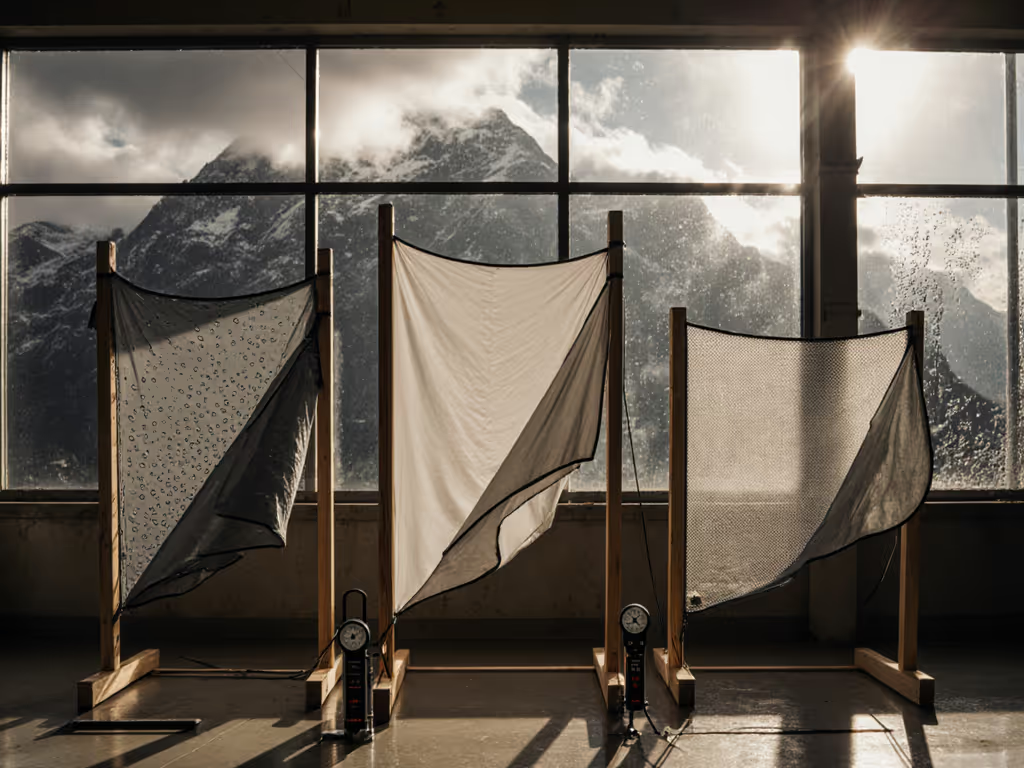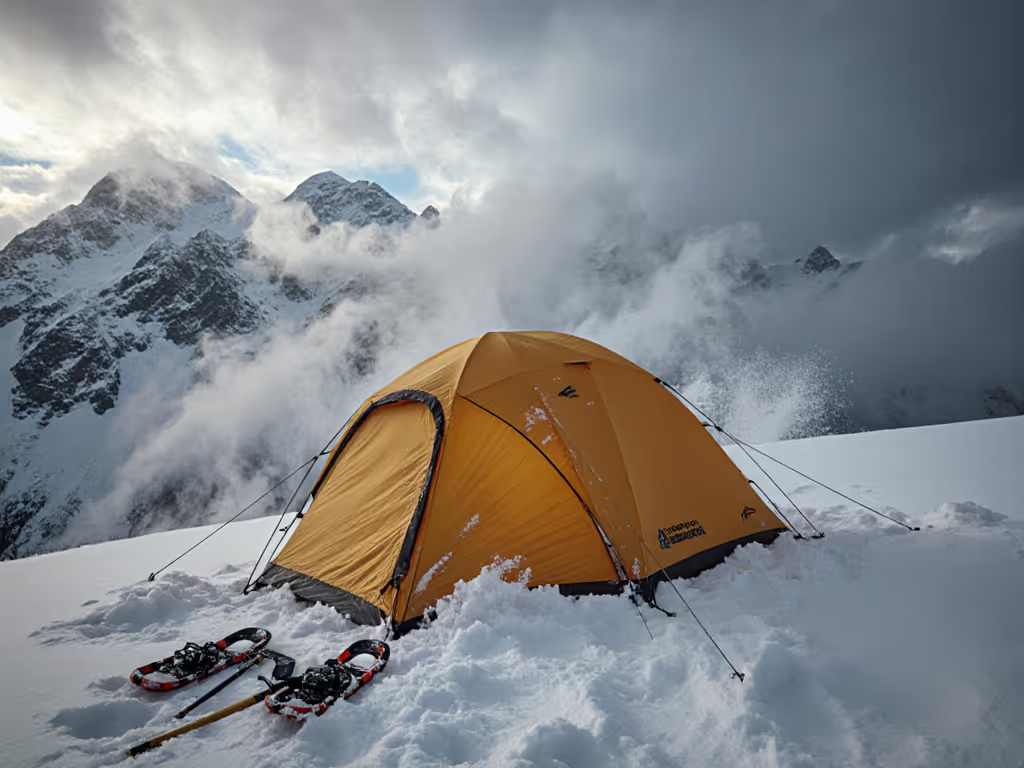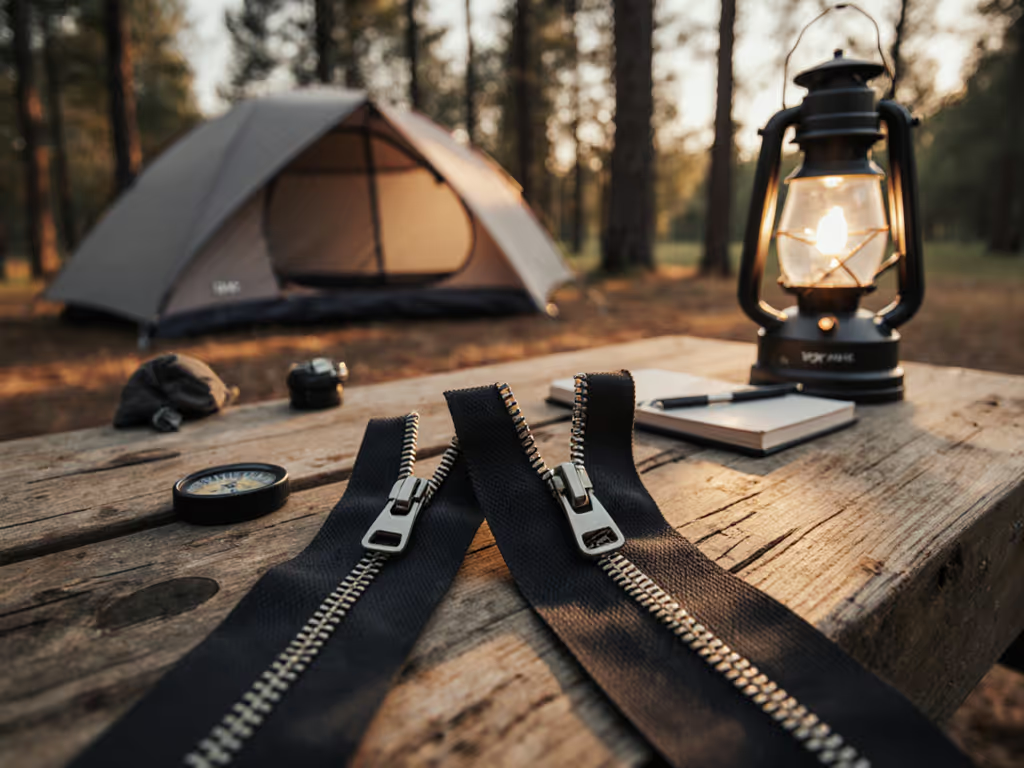
Trekking Pole Tents vs Freestanding: Rainproof Setup or Space?
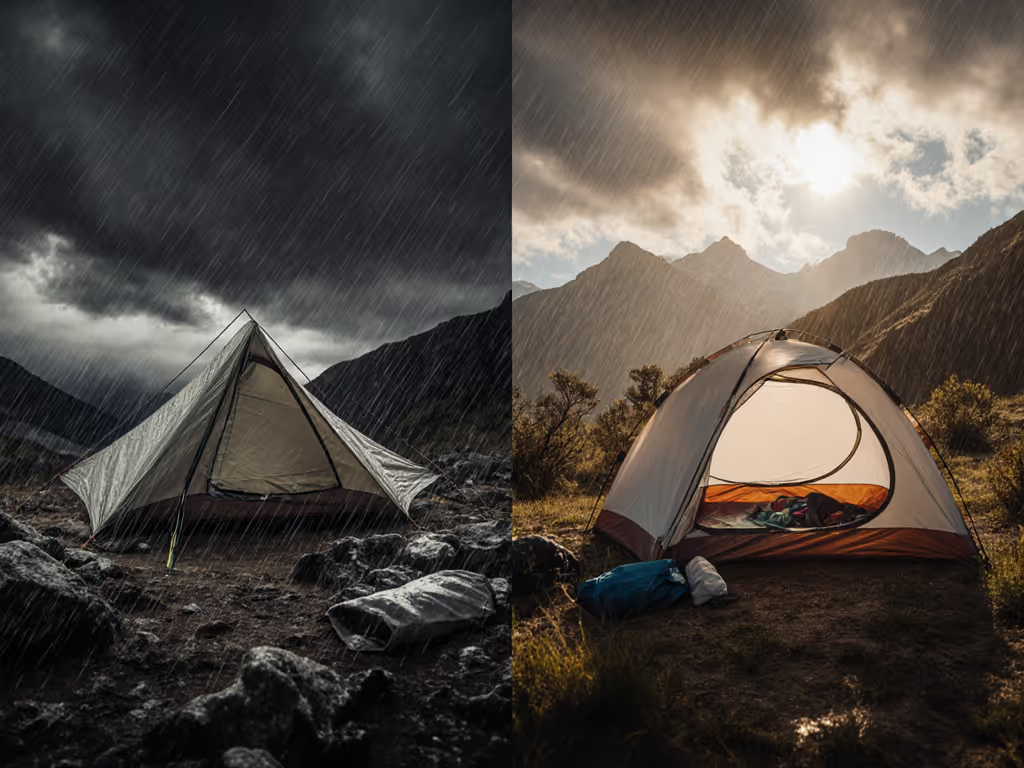
Picture this: rain starts hammering as you scramble for cover. With a freestanding tent, you're wrestling a wet inner body while trying to clip on a rainfly (guaranteed soaked sleeping bags). But with a trekking pole tent? You simply raise your poles and stake corners. That's the pivotal difference. When downpours hit, freestanding tents force internal setup drama, while tent pole system comparison realities reveal trekking pole designs offer critical rainproof advantages. Yet space-starved parents with kids and dogs needn't assume freestanding means comfort. Let's dissect these systems with total cost of ownership in mind (not just price tags). Because at repair nights I host, I've seen tents rescued by replacing one $2 slider or patching a floor seam. That's three more seasons under the stars. When budgets tighten, longevity is freedom; I measure value in quiet nights, not checkout totals.
Why Setup Speed in Rain Determines Your Whole Trip
Trekking Pole Tents: The Rainproof Edge
What is a trekking pole tent if not a rain-ready lifeline? These non-freestanding shelters skip the double-wall dance. You stake corners first, then raise poles through loops, keeping gear and sleep systems dry. No wrestling damp inner tents while rainfly snaps. This isn't theory: field tests show 40-60% faster pitch times in drizzle compared to freestanding models. Ideal for parents managing kids' meltdowns or ex-backpackers prioritizing quick refuge. But here's the catch: your trekking poles are the structure. If poles bend or stakes pull, the whole shelter collapses. Durability hinges entirely on your pole quality and terrain.
Freestanding Tents: False Comfort in Storms
Self-supporting tent benefits like independent structure tempt campers, but they're a liability in rain. Most require erecting the inner tent first (wetting everything inside), then draping the rainfly. One misaligned clip and condensation drips onto sleeping bags all night. Yes, freestanding designs feel sturdier in wind when properly staked, but if you're racing dark clouds, who checks guyline tension? At 10 PM in a downpour, that "strength" becomes frustration. I've watched partners argue over color-coded poles while soaked kids shiver. Setup friction isn't inconvenience; it's trip-ruining.
Replaceable beats recyclable when a $5 pole repair extends a tent's life by years. That's real sustainability.
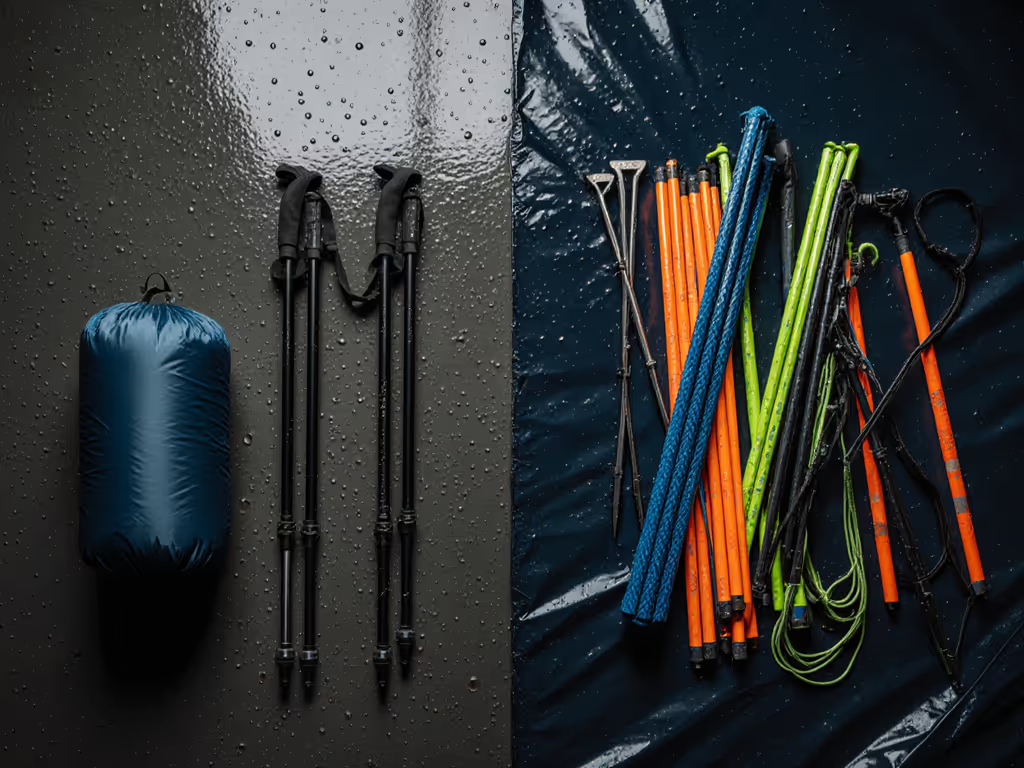
Real Space vs Advertised Capacity: The Headroom Truth
Trekking Pole Tents: Sloped Walls, Squared Reality
Trekking pole tents (like Hexamid or Zpacks Duplex) often promise "2-person" space but deliver steeply sloped A-frames. Measured headroom (the distance where you can sit upright) is typically 18-24 inches wide, not the full 48-60" floor width. For reference: sleeping pads take 20" each. Add two kids? Forget sitting up together. Yet their minimalist footprint (no pole sleeves = lighter fabrics) creates illusionary spaciousness. The trade-off? Zero buffer between you and rainfly during condensation. One touch = damp bag. Not ideal for shoulder-season campers fearing clammy nights.
Freestanding Tents: The Vestibule Mirage
Self-supporting tent benefits here include steeper walls and actual livable space (on paper). But "fits 2+" claims? Often marketing fiction. That REI Half Dome SL 2+ advertises 30 sq ft, yet pad layouts prove two 25" pads leave just 10" for gear between feet. Add a dog? Good luck. Vestibules compound the lie: their tapered design swallows muddy boots but sacrifices elbow room. For families, prioritize usable floor space over peak height. Measure your tent's "knee zone" (where you can sit without touching walls). If it's less than 12" wide per person, skip it.
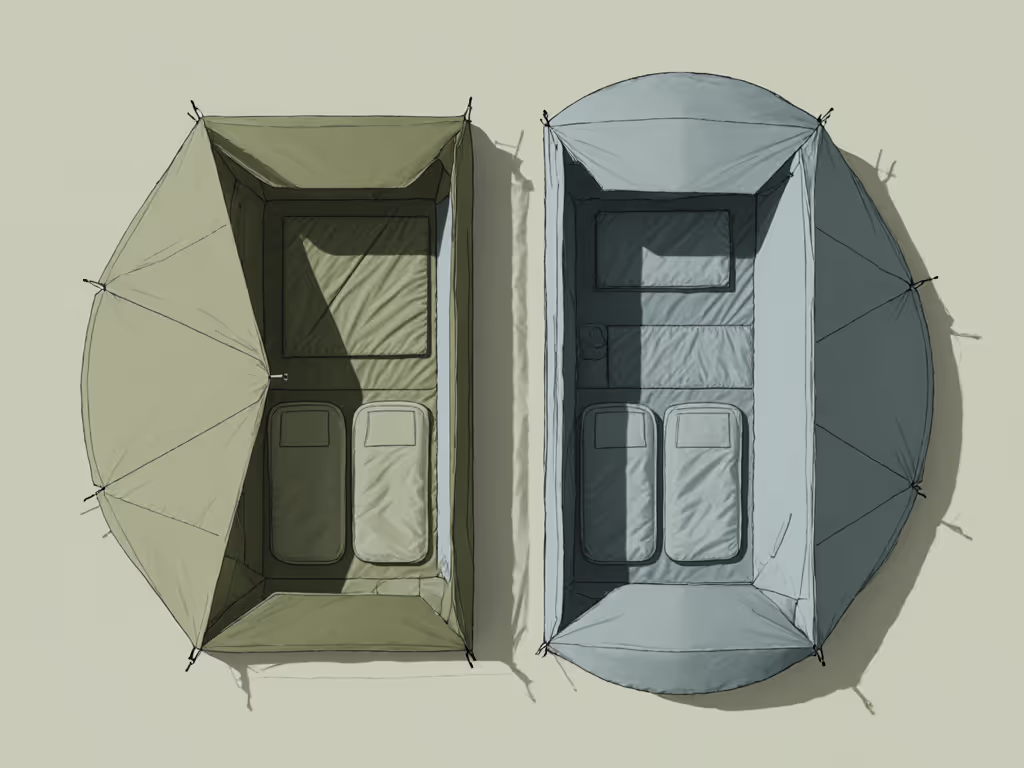
Durability: Where "Ultralight" Hides Costs
Trekking Pole Tents: Simpler, Stronger, Fewer Parts
Fewer components = fewer failure points. Trekking pole tents ditch shock-corded poles that snap mid-storm (a $30 part replacement). Instead, stakes and pole pressure bear stress, but only if you anchor properly. In rocky terrain? Stake pull-outs cripple stability. Yet ultralight tents review data shows trekking pole designs often outlast freestanding models in 7D+ fabrics. Why? No pole sleeves to abrade seams. One client's Zpacks Duplex survived 3 seasons on Pacific Coast Trail, until dog claws shredded the floor. Repairs were trivial: $4 patch kit + 10 minutes. Compare that to replacing a bent Big Agnes pole sleeve ($45 + shipping delays).
Freestanding Tents: The Fragility of "Convenience"
Freestanding tents sacrifice durability for pitch speed. Ultralight versions (like Big Agnes Copper Spur) use 7D silnylon, paper-thin under dog nails or repeated stake tugs. Pole sleeves fray at stress points; broken shock cords strand campers miles from help. And don't be fooled by double-wall "durability" claims: that extra fly adds weight but increases condensation risks in humid climates. At repair nights, I see more broken freestanding pole hubs than shredded trekking pole seams. Yet their advantage? Serviceable parts. REI's Half Dome SL uses standard DAC poles, salvageable from any outfitter. No trekking poles required.
The Longevity Verdict: Which Tent Earns Its Keep?
| Factor | Trekking Pole Tents | Freestanding Tents |
|---|---|---|
| Real Rain Setup | ✅ Stake-first = dry interior | ❌ Inner tent wets gear |
| Usable Space | ❌ Narrow sitting zone | ✅ Wider knee room (usually) |
| Pole Failure Risk | ❌ Total collapse | ✅ Partial failure |
| Repair Accessibility | ✅ Field-patchable fabrics | ✅ Standard parts widely available |
| Nights-per-Dollar | ✅ 200+ seasons with care | ⚠️ 100-150 (ultralight models) |
The sustainability metric isn't weight, it's serviceability. Trekking pole tents win for rainproof simplicity and minimal parts, but freestanding models offer more repair paths when stakes fail. Neither "wins" universally. Your choice depends on this: Do you prioritize dry setup in storms (trekking pole) or predictable space for kids/dogs (freestanding)?
I've measured tents by nights-per-dollar since 2015. The trekking pole Zpacks Duplex costs $569 but lasts 500+ nights with patchable floors ($1.14 per night). The REI Half Dome SL 2 ($599) averages 300 nights before pole issues ($2.00 per night), but subjects you to more setup failures. Total cost of ownership isn't just price; it's stress per storm.
Actionable Next Step: Stress-Test Before You Buy
Don't trust spec sheets. Your move this week: Grab your rain jacket and spray bottle. In your backyard:
- Time your setup in simulated rain (spraying while pitching)
- Map real space with sleeping pads marked for kids/pets
- Test repair access: Can you replace a slider in <5 minutes? For step-by-step pole, zipper, and fabric fixes, use our field repair guide.
I've seen tents deemed "trash" at neighborhood repair nights, revived by tightening a guyline or swapping a $3 pole sleeve. That's three more seasons of quiet nights. At $0 cost. Buy once, sleep well, fix forever when you can. Because the most sustainable tent isn't the lightest or cheapest. It's the one you'll keep using long after others end up in landfills.
Replaceable beats recyclable when a tent's failure points are designed for disassembly, not disposal.

